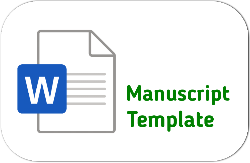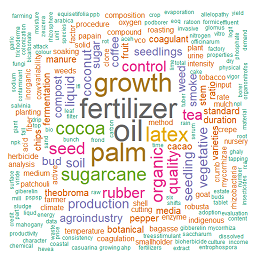Pemetaan Iklim Tanaman Kelapa Sawit di Kecamatan Bintang Bayu, Kabupaten Serdang Bedagai, Provinsi Sumatera Utara
DOI:
https://doi.org/10.25181/jaip.v9i1.1706Keywords:
climate type, rain fall, oil palm, Schmidt-Ferguson, trendAbstract
Climate is one of the factors that influence the growth, and production of palm oil, one of the most important climate elements is rain. Rain is the main source of water in meeting the needs of palm oil trees. This research aimed to map the climate type of Bintang Bayu region and to determine the trend of rainfall in 10 years (2010-2019) in Bintang Bayu Sub-district, Serdang Bedagai District, Sumatera Utara Province. This research used Geographical Information Systems (GIS) and descriptive-analytical methods. Rainfall data derived from satellite imagery (Data Chips-2.0, UCSB) obtained from the Meteorology and Geophysics Agency (BMKG) Stasiun Klimatologi region of Deli Serdang which was used as the basis for determining dry and wet months based on Schmidt-Ferguson. Evaluation of rainfall suitability was carried out by comparing the annual rainfall observation data with the Palm Oil Land Suitability Criteria based on the Indonesian Center for Agricultural Land Resources Research and Development. The results showed that Bintang Bayu Sub-district had climate type A (tropical rain forest), in which, in the area with climate type A was suitable for palm oil plants. Based on the distribution of annual rainfall, there were two distributions of rain, that were 2,500-3,000 mm.year-1 and 3,000-3,500 mm.year-1, there were no areas with an annual rain distribution of 2,000-2,500 mm.year-1, thus the Bintang Bayu region is included in the S2 class. In ten years, there was an increase in rainfall in January, May, July, and October while in other months there was a decrease in rainfall.Downloads
References
Agustiana, S., Wandri, R., & Asmono, D. (2019). Performa Tanaman Kelapa Sawit pada Musim Kering di Sumatera Selatan; Pengaruh Defisit Air terhadap Fenologi Tanaman. Seminar Nasional Lahan Suboptimal 2018 (pp. 978–979).
Benny, Putra, E. T. S., & Supriyanta. (2015). Tanggapan Produktivitas Kelapa Sawit (Elaeis guineensis Jacq.) terhadap Variasi Iklim. Vegetalika, 4(4), 21–34.
BPS. (2019). Kecamatan Bintang Bayu dalam Angka Tahun 2019. In Badan Pusat Statistik. Badan Pusat Statistik Kabupaten Serdang Bedagai. https://serdangbedagaikab.bps.go.id
Depari, C. N., Irsal, & Ginting, J. (2015). Pengaruh Curah Hujan dan Hari Hujan Terhadap Produksi Kelapa Sawit Berumur 12, 15,18 Tahun di PTPN II Unit Sawit Sebrang-Babalan Kecamatan Sawit Seberang Kabupaten Langkat. Jurnal Online Agroekoteknologi, 3(1), 299–309. https://doi.org/10.32734/jaet.v3i1.9481
Hadi, M. (2004). Teknik Berkebun Kelapa Sawit. Adicita Karya Nusa.
Katadata, T. P. (2019). Luas Perkebunan Sawit Rakyat 40,6% dari Total Perkebunan Sawit Indonesia. Databoks. https://databoks.katadata.co.id/
PASPI. (2016). Industri Minyak Sawit Bagian Solusi dari Pemanasan Global dan Perubahan Iklim. Gabungan Pengusaha Kelapa Sawit Indonesia (GAPKI). https://gapki.id/news/
Pradiko, I., Farrasati, R., Rahutomo, S., Ginting, E. N., Candra, D. A. A., Krissetya, Y. A., & Mahendra, Y. S. (2020). Pengaruh Iklim terhadap Dinamika Kelembapan Tanah di Piringan Pohon Tanaman Kelapa Sawit. Warta PPKS, 25(1), 39–51.
Ritung, S., Nugroho, K., Mulyani, A., & Suryani, E. (2011). Petunjuk Teknis Evaluasi Lahan Untuk Komoditas Pertanian (Edisi Revi). Badan Penelitian dan Pengembangan Pertanian, Kementerian Pertanian.
Runtunuwu, E., & Syahbuddin, H. (2007). Perubahan Pola Curah Hujan dan Dampaknya Terhadap Periode Masa Tanam. Jurnal Tanah dan Iklim, 26, 1–12.
Rusmayadi, G. (2011). Dinamika kandungan air tanah di areal perkebunan kelapa sawit dan kerat dengan pendekatan neraca air tanaman. Agroscientise, 18(2), 86–93.
Salinger, M. J. (2005). Climate variability and chage : past, present and future-an overview. In Cilmatic Change (Vol. 70). https://link.springer.com/chapter/10.1007/1-4020-4166-7_3
Sardjono, M. (2020). Refleksi Industri Kelapa Sawit 2019 dan Prospek 2020. Gabungan Pengusaha Kelapa Sawit Indonesia (GAPKI). https://gapki.id/news/
Schmidt, F. H., & Fergusson, J. H. A. (1951). Rainfall Types Based on Wet and Dry Period Rations for Indonesia with Western New Guinea. Kementrian Perhubungan Meteorologi dan Geofisika.
Simanjuntak, L. N., Sipayung, R., & Irsal. (2014). Pengaruh curah hujan dan hari hujan terhadap produksi kelapa sawit berumur 5,10 dan 15 tahun di kebun Begerpang Estate PT. PP London Sumatra Indonesia, Tbk. Jurnal Online Agroekoteknologi, 2(3), 1141–1151.
Siregar, H. H., Darlan, N. H., & Pradiko, I. (2015). Pemanfaatan Data Iklim untuk Perkebunan Kelapa Sawit. https://agroklimatologippks.files.wordpress.com
Sujadi, Pradiko, I., Rahutomo, S., & Farrasati, R. (2020). Prediksi Kemampuan Adaptasi Delapan Varietas Kelapa Sawit pada Cekaman Abiotik Akibat Perubahan Iklim Global. Jurnal Tanah dan Iklim, 44(2), 129–139. https://doi.org/DOI: http://dx.doi.org/10.21082/jti.v44n2.2020.129-139
Syarovy, M., Ginting, E. N., & Santoso, H. (2015). Respon morfologi dan fisiologi tanaman kelapa sawit (Elaeis guineensis Jacq.) terhadap cekaman air. Warta Pusat Penelitian Kelapa Sawit, 20(2), 77–85.
Downloads
Published
How to Cite
Issue
Section
License
Copyright (c) 2021 Sakiah Sakiah, Settings Eka Bobby Febrianto, Settings Ayi Sudrajat, Settings Albert Kristian Siregar

This work is licensed under a Creative Commons Attribution-ShareAlike 4.0 International License.
Authors who publish with Jurnal Agro Industri Perkebunan agree to the following terms:
Authors retain copyright and grant the Jurnal Agro Industri Perkebunan right of first publication with the work simultaneously licensed under a Creative Commons Attribution License (CC BY-SA 4.0) that allows others to share (copy and redistribute the material in any medium or format) and adapt (remix, transform, and build upon the material for any purpose, even commercially) with an acknowledgment of the work's authorship and initial publication in Jurnal Agro Industri Perkebunan.
Authors are able to enter into separate, additional contractual arrangements for the non-exclusive distribution of the journal's published version of the work (e.g., post it to an institutional repository or publish it in a book), with an acknowledgment of its initial publication in Jurnal Agro Industri Perkebunan. Authors are permitted and encouraged to post their work online (e.g., in institutional repositories or on their website) prior to and during the submission process, as it can lead to productive exchanges, as well as earlier and greater citation of published work.


























